Selected for comparison here are the Lumia 950 XL and the Google Nexus 6, since I'd been looking to do something on HDR capabilities in bright sunlight for a while and I noticed that the Nexus 6 (and other recent Nexii!), all running the very latest Android 6.0.2 Marshmallow, had 'auto' HDR+, i.e. the software decides when to turn the function on or not and how to use it. Mirroring rather neatly the auto-Rich Capture function in the latest incarnation of Windows 10 Camera on the Lumia 950 and 950 XL - again, the software looks at what's in the viewfinder and then decides on its own as to what to do.
Many have complained that the facility to 'force' Rich Capture on has been lost in this latest software, i.e. you can't take scenes and artificially 'jazz them up', but if you're after an attractive and accurate photo then I think it's best to trust the Microsoft algorithms. Even more so, since - as you'll see - they don't really need to kick in very often!
Notes:
- Unusually, for a camera feature here on AAWP, I haven't cropped in at all - because I'm more interested in light handling and colour than detail at the pixel level. That the Lumia 950 shots also have more detail in them is somewhat incidental here.
- I've specifically stuck to sunny shots, since I've covered low light situations in previous imaging features here on AAWP.
- All shots are handheld and all shots are with the Camera applications in fully automatic (HDR) mode - how most users would use them. Both applications/devices do have fully manual modes too, of course, so each's photos can be tweaked at capture time in a myriad different ways.
| Note that the interactive comparator below uses javascript and does need to load each pair of images. Please be patient while this page loads, if you see a pair of images above each other than you've either not waited long enough or your browser isn't capable enough! |
Test 1: Generic sunny scene
At Henley on Thames, loads of detail and texture, in sunshine. In case you want to grab the original images to do your own analysis, here they are, from the Lumia 950 XL (in oversampled 8MP mode) and Nexus 6, click the links to download. Just wait to make sure the page has fully loaded and then use your mouse or trackpad pointer to compare the images:
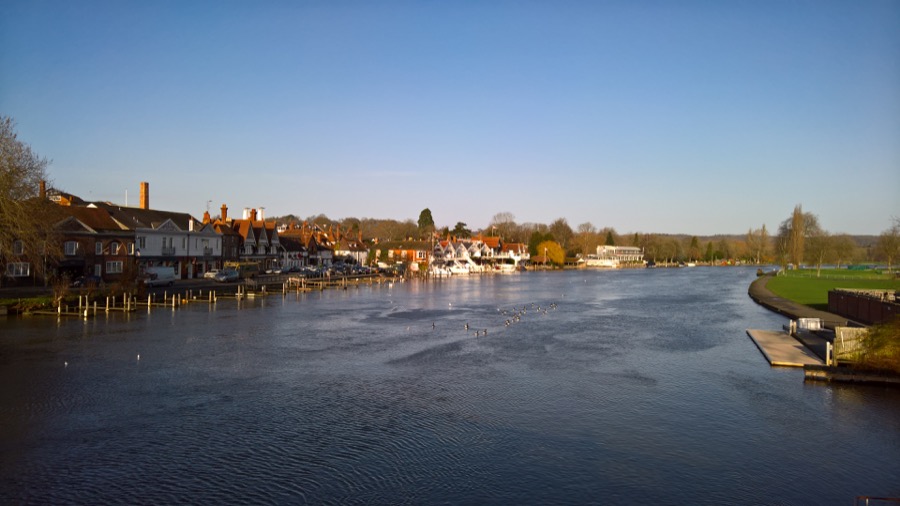
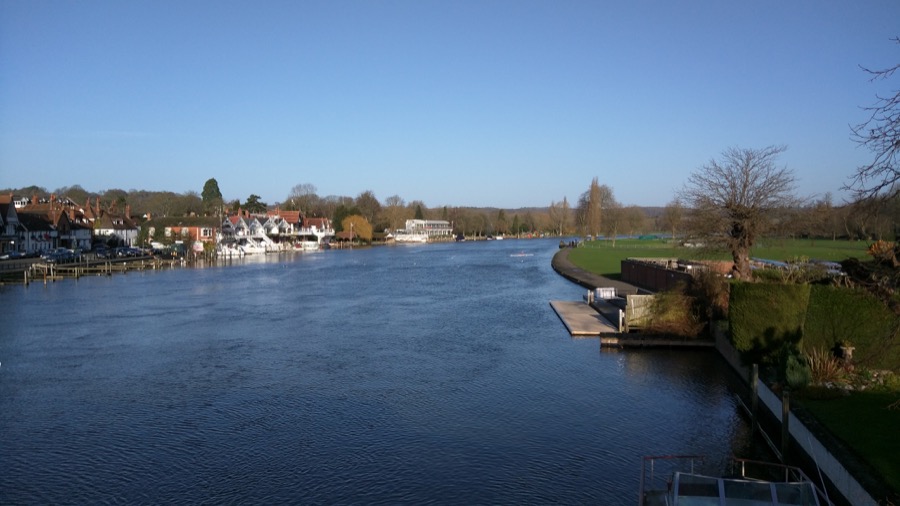
Apologies for the slightly different framing here, but I don't think it makes much difference to any verdict. The 950 XL photo is warmer in terms of colours, but only marginally so, and both are excellent - if easy to pull off - snaps.
What's interesting is that the Nexus 6, as with all the shots here, went into HDR mode, i.e. multiple shots and then combined them (which takes about five seconds, as you can see if you tap through quickly on the device - shades of the Lumia's 'Adding finishing touches'!), whereas the Lumia 950 XL didn't deem this shot worthy of Rich Capture and snapped it in a single exposure.
Test 2: Bright subject, obliquely into the sun
A nicely detailed and interesting boat, lit brightly on one side by the sun. In case you want to grab the original images to do your own analysis, here they are, from the Lumia 950 XL (in oversampled 8MP mode) and Nexus 6, click the links to download. Use your mouse or trackpad pointer to compare the images:


Aha, now we're getting somewhere, I thought. The Lumia 950 XL shot is visibly better exposed all round, with bluer sky, richer colours, no overblown highlights (such as the sunlit sides of the boat), and more exact detail. So Rich Capture was working its magic. Except that it wasn't - checking back in Photos shows no 'Choose Best Lighting' slider and this shot too wasn't deemed worthy of even switching into using multiple exposures. The superiority in results was achieved using just the superior sensor, optics and processing.
Test 3: Shooting almost into the sun
OK, time to really force the Rich Capture issue, shooting this weir almost into the winter sun, with just the tree on the right of the frame stopping the sun's rays from shining straight into the camera phones and causing unwanted flares and effects. In case you want to grab the original images to do your own analysis, here they are, from the Lumia 950 XL (in oversampled 8MP mode) and Nexus 6, click the links to download. Use your mouse or trackpad pointer to compare the images:
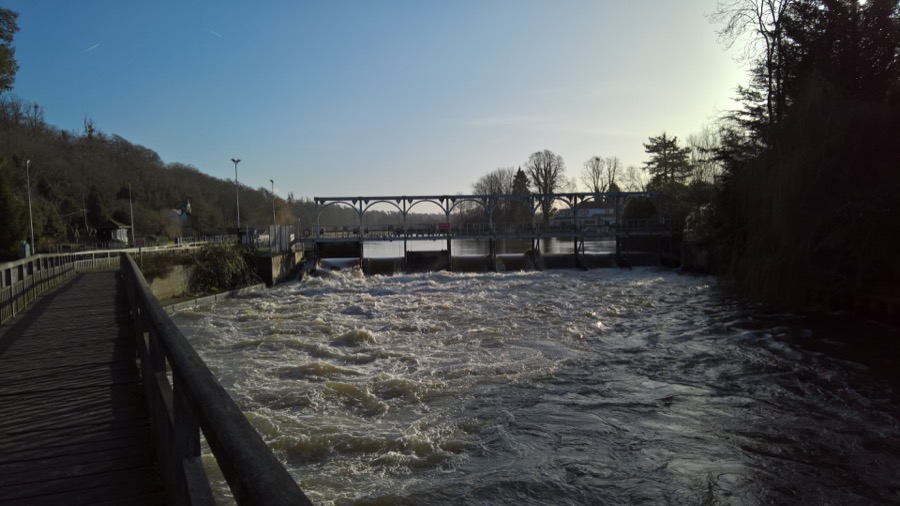
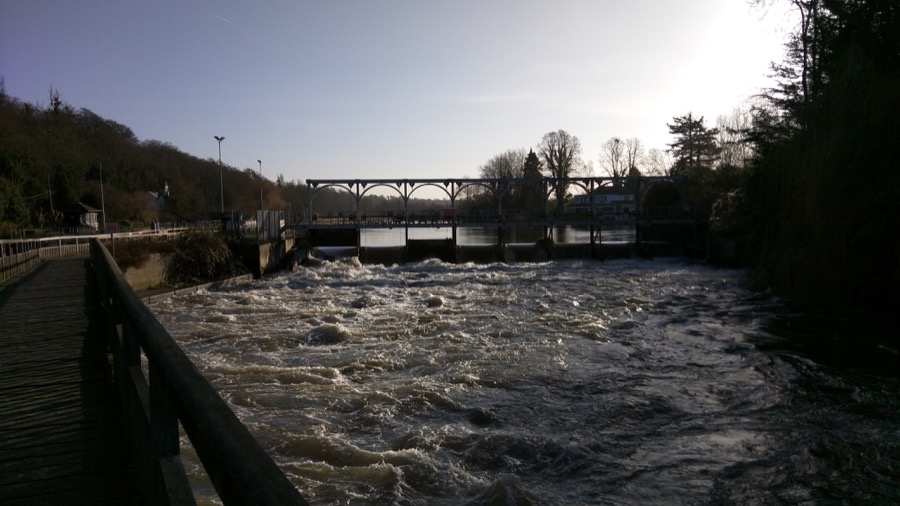
As with the shot of the steamer/boat, the 950 XL photo here looks 'better', with more natural detail and character, a bluer sky and a less processed look. Understandable since, amazingly, the 950 XL camera is still not switching into Rich Capture and multiple exposures, even shooting such extremes of light and dark. The Nexus 6 and Android's native Camera app, meanwhile, is processing multiple shots and still ending up with a photo that's not as satisfying.
Test 4: Contrast extremes indoors
Giving up on outdoor scenes, I thought I'd try my hand indoors, so I nipped into Henley's biggest church (the snap here is just one of the side chapels), river-side. Aha. A Christmas tree, bringing this feature into season!
In case you want to grab the original images to do your own analysis, here they are, from the Lumia 950 XL (in oversampled 8MP mode) and Nexus 6, click the links to download. Just wait to make sure the page has fully loaded and then use your mouse or trackpad pointer to compare the images:
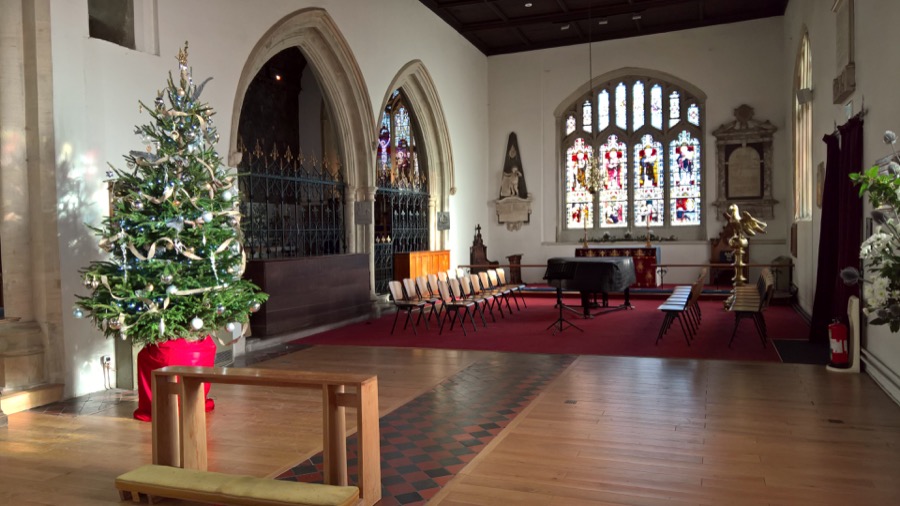

The differences here aren't quite as apparent as in the previous snaps - here it's about the colouring. And I'm not going to say that either is perfectly accurate since, to my eyes, reality was somewhere in between the two. Both are decent photos and both phones had the same difficulty in focussing on the Christmas tree - as many readers have noticed, trying to snap a Christmas tree isn't trivial - there's so much natural contrast and detail available that contrast-based focussing mechanisms get very confused. In the end, for both shots, I ended up trying to focus on the tiles in the centre foreground.
Oh yes, and, needless to say, the Lumia still didn't kick in with Rich Capture HDR.
Test 5a: Stained glass
My last ditch throw of the HDR dice - surely shooting the sun through a stained glass window would cause the Windows 10 Camera algorithms to turn on Rich Capture? In case you want to grab the original images to do your own analysis, here they are, from the Lumia 950 XL (in oversampled 8MP mode) and Nexus 6, click the links to download. Just wait to make sure the page has fully loaded and then use your mouse or trackpad pointer to compare the images:


Now this is interesting, the Lumia 950 XL Camera did switch into Rich Capture mode and took bracketed exposures, but the blend/shot selected by default has no HDR at all, as evidenced by the poor showing above. In fairness, shooting stained glass windows probably wasn't in Microsoft's mind when programming the shot selection algorithms, but the default output is still disappointing, while the Android Camera algorithms on the Nexus 6 produce a rather good HDR rendition, with only a few overblown portions of the glass.
However - the core point about the Lumia Rich Capture is that you can change the HDR blend after the fact, something which is still unique in the smartphone world. So, undeterred by the poor showing above, several days after my Henley trip, I went into Photos manually and tapped on the big 'Choose Best Lighting' button, picking a blend that was far more 'Artistic HDR' than 'no HDR'. Here's the result, again compared to the Nexus 6 shot:
Test 5b: Stained glass, with 'best lighting'
Here are the images, from the Lumia 950 XL with 'Best lighting' tweaked, and Nexus 6, click the links to download. Just wait to make sure the page has fully loaded and then use your mouse or trackpad pointer to compare the images:


Much, much better - almost perfect, in fact. Maybe Microsoft should rename 'Artistic HDR' as 'Stained Glass Mode'!? It's interesting that the software didn't come up with this blend of exposures on its own, but at least it's possible to arrive at the perfect mix of colour and contrast with a flick of a finger on an on-screen slider, all on the device, even at a later time.
Takeaways, notes and suggestions
Note that this feature was not meant to pitch the two devices head to head in terms of imaging, they simply happened to be two equivalent devices that I had to hand. Maybe you remember that I did a spec-head-to-head between the Lumia 950 XL and the Nexus 6 a couple of months ago? For absolute imaging prowess see, for example, my imaging head to head of the 950 range against the Android camera champion, the LG G4.
The takeaways here are:
- the automatic Rich Capture system on the Lumia 950 and 950 XL only 'triggers' under extremes of light. A bright sunny day isn't enough on its own. (Though do note that Rich Capture also covers dim light and flash-lit situations, of which more in a future feature.)
- the above observation is somewhat moot, since the dynamic range and colour handling of the sensor and optics in the 950/XL are so good that they already exceed, with a single exposure, the capabilities of processed HDR on everything but the very best Android smartphones and iPhones.
- the Rich Capture system's triggering does therefore seem pretty well worked out, though when it is activated, the choice of image blending doesn't always work out - so you should always reserve the right to tap through after-the-fact and have a fiddle.
Mind you, as was remarked above and in my full reviews of the 950/XL in the imaging department, not everyone's a fan of having Rich Capure so automatic. While it means that it can, generally, just be left 'on', with very little downside, there's no way to force the phone to take Rich Capture, for example while going for a dramatic landscape 'special effect'. Yes, HDR shots can look artificial, but they can also be very striking and with the current system there's no way to achieve this on the Lumia 950/XL. Microsoft, if you're reading this, let's have a three way toggle for Rich Capture, pretty please - 'off', 'automatic' and 'on'.
It's also well worth noting that even single shots incur a few seconds of 'Adding finishing touches', i.e. extra processing, this encompasses oversampling, file saving, 'living image' creation, and other 'magic', some of which I'm still trying to piece together, but including post-capture white balance correction. The delay is rarely an issue in real life, and all the processing happens in the background on one of the other Snapdragon processor cores, so there's no slowdown in whatever else you might be eager to get on with on the phone, etc.
Despite the other quirks and instabilities (chronicled in many places, most recently here), the Lumia 950 and 950 XL are impressive phones, with the jewel in their crowns being the camera. Just as in the old days of Nokia, it seems as if some of the old magic is still at work behind the scenes.
